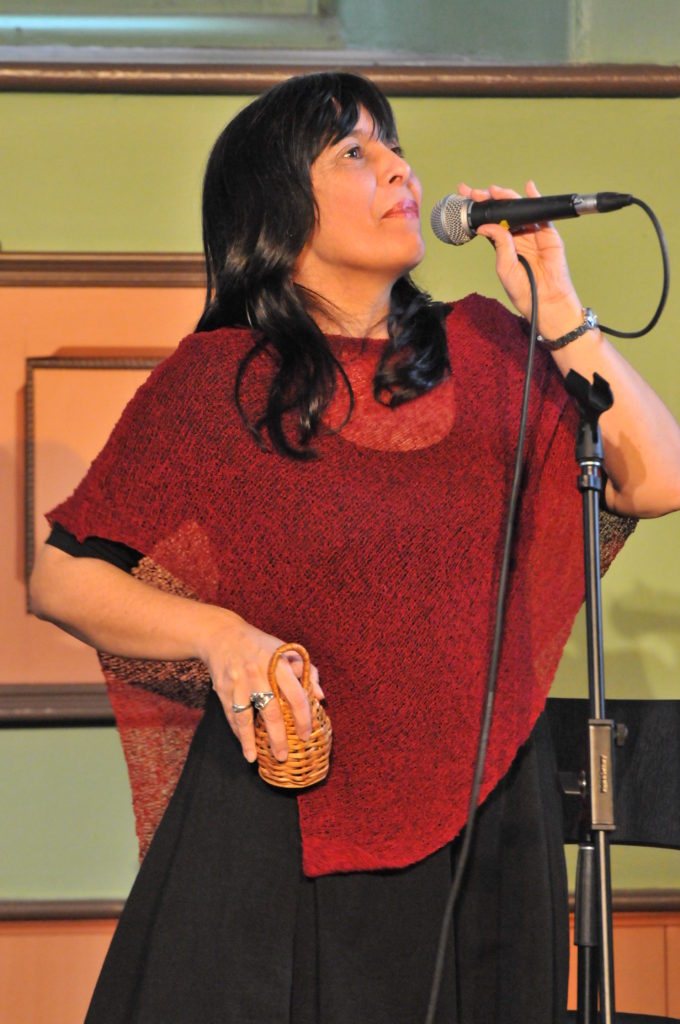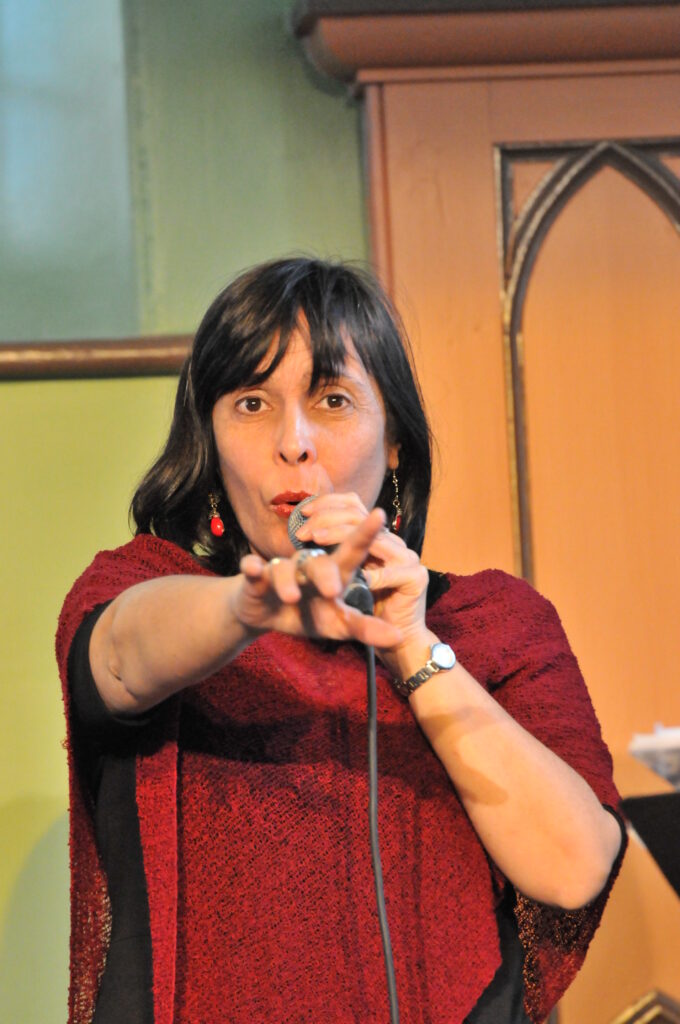Whether you’re a beginner or a professional, my singing and vocal technique lessons will allow you to find strategies to bring you further along and help you achieve your goals.
Singers are both performers and instruments, and that dual nature requires them to develop technical skills, just as a violin maker would—learning about the structure, the operation, and the handling of the instrument. At the same time, singing is a performing art, and there are artistic, musical, expressive, and stage aspects that musicians have to develop.
The primary goal of training is to find a good vocal balance in order to acquire or consolidate the vocal freedom to express yourself, and to communicate as a performer. As a vocal teacher, my job is to guide singers through the process of integrating technical and artistic aspects, and to help them accept and develop their unique sound and style, which is crucial especially in pop music.
I’m lucky enough to work with a diverse clientele, and with students of all ages. Some sing for pleasure, and the lessons are a way for them to live out their passion and express themselves. Others sing in choirs, and need to hone technical elements that they don’t necessarily get in a choral setting. Others still are singers looking to start or develop a career, and they need to get to know their voices better and deepen their practice. I also work with more experienced singers and professionals looking for specific support for a project—to prepare for srecording session, to get some audition coaching, or to manage their concert schedule better vocally.
What are singing lessons like?
First and foremost
We take a moment to connect with our bodily sensations and the natural rhythm of our breathing through stretching, movement exercises, visualizations, and other relaxation exercises. This allows us to unwind and take a break from the daily grind.
Voice exploration
It’s time to make some noise! Vocal exploration starts with an awareness of vibrating air, commonly known as resonance, which is created and supported by tools including a variety of vocal and body exercises that enable us to better recognize the sensations associated with an easy, effortless voice. Vocalizations are played on the piano and can be recorded for later practice. We talk about larynx anatomy and function to establish a connection with vocal exploration and to name what we feel. I encourage students to remain present in their bodily perceptions and feelings.
And, of course, you’ll be performing songs! I like to start by exploring a repertoire that students are familiar with, and then suggest other songs or styles.
From the first class
We’ll use the technical tools we’ve learned, working on musicality and interpretation, and especially cultivating the pleasure of singing and letting the voice blossom.
I encourage students to create a personal space for practice: explore your voice at home, on your own, using a recording made during lessons and practising by following a few simple instructions from me.


Online lessons
The structure of online lessons is largely the same as an in-person lesson, with a few adjustments, since simultaneity isn’t possible online: if I play a vocalise, you won’t be able to sing at the same time as the piano; instead, you’ll have to sing immediately afterwards. As in in-person lessons, you’ll be able to record the exercises to practise later. We’ll use backing tracks for songs.
You’ll be standing or sitting in front of your screen. Your hands should be free, so your mobile phone or tablet should be on a stand. You’ll see me on your screen.
Online courses are as effective as if you were with me, in my studio. We’ll work together beforehand to make any necessary adjustments to ensure good audio and video quality.
Real-time communication
Whether in person or online, real-time exchange is essential for vocal development and for good vocal health. That’s why personalized vocal coaching is essential.
My approach
The voice is a body that vibrates. A resonance that inhabits us and unfolds, communicating meaning, carrying emotions, telling stories. It is a musical instrument unlike any other.
Technical knowledge and artistic expression span the many facets of the vocal instrument that make singing so fascinating. Every voice has its own colour, energy, and emotional weight, just as every singer has their own goals and motivations. I encourage my students to remain present in the process and the feeling, and I support them as we move toward their performance objectives. An empathetic self-perception and a caring attitude toward your voice is also important in order to value what you’re working with in the here and now, though that doesn’t prevent wanting to outdo yourself, to improve, and to explore new vocal possibilities.
In singing as in many other artistic practices, we learn by doing. That’s why it’s so important for me to help singers become more autonomous by building an efficient method to truly understand and integrate the technical tools and concepts they work on with me.
– Features and functions of the larynx and the various muscles that affect the voice.
– Singing physiology: breath (power), sound (source), resonance (filter).
– Voice production interaction and dynamics.
– Recognizing the sensations associated with an easy versus a forced voice.
– Different vocal registers: mechanisms of the larynx, exploration, and recognition; mixed voice.
– Low to high register flexibility development.
– Semi-occluded vocal tract (SOVT) exercises: labial trill, tongue trill, raspberries; vibrating sounds; straw technique.
– Water resistance exercises: Lax Vox and other tools.
– Voice re-education for voice disorders (fatigue, voice loss, pathologies; in conjunction with ENT and speech therapists).
– Effort management: vertical body axis, muscular tension, and voice-related reflexes.
– Muscular balance and anchoring.
– Vocalization: vowels, consonants, syllables, words.
– Drone and spontaneous improvisation.
– Belting, twang, and other style-specific effects.
– Performing songs, exploration, and developing a repertoire.
– Microphone technique.
– The body in space: voice and movement, movement ease, stage presence.
– Connecting with lyrics.
– Vocal technique in the service of emotion and communication.
– How we see ourselves and how others see us.
– Managing stress and stage fright.